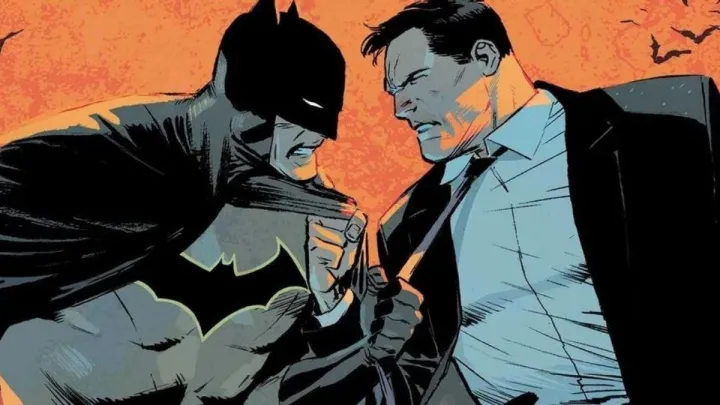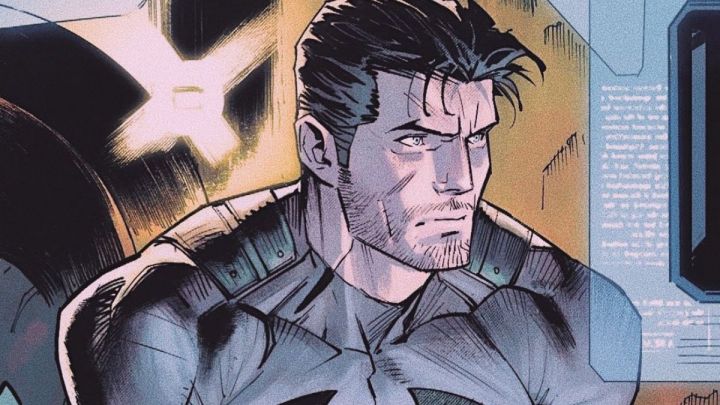Batman is arguably the greatest comic book character ever created. Heroes come and go, but Batman remains, brooding, traumatized, and always ready to do whatever it takes. Unlike other comic book figures, the Dark Knight’s fame and relevance only keep increasing, which is impressive considering he debuted 83 years ago in the blossoming years of the Golden Age of Superheroes.
Batman has always been fascinating and unique in the comic book world, a character as inspiring as he is intimidating. The Caped Crusader is both a role model and a cautionary tale, a man who extinguished the light within to solely exist in the shadows.
A serious hero

The Caped Crusader’s comic books constantly visited themes of trauma and pain stemming from his tragic backstory, giving the character a sense of gravitas that legitimized him in the eyes of the mainstream. Unlike other silly superheroes in brightly colored tights, Batman was a serious character, a tragic hero for the postwar world who would’ve been just as comfortable in Wuthering Heights as he was in Wayne Manor.
Batman/Bruce Wayne is a Byronic hero for the modern era: Arrogant, intelligent, tortured, and self-destructive, holding an obsession that threatens to destroy him but from which he’s incapable of escaping. Whereas Batman is all determination, Bruce is all conflict. While Batman is all black, Bruce is all gray, constantly moving back and forth between duty and desire.
It’s easy to forget that Batman is not one but two distinctive characters. Unlike other superheroes who have one clear and defined identity, Batman and Bruce Wayne are separate beings sharing the same body. Peter Parker is always Peter Parker, even when donning the Spider-Man suit; Dick Grayson remains Dick Grayson, in and out of the Nightwing costume; and as clumsy and unassuming as Clark Kent is, he still carries the essence of Superman, that overwhelming wholesomeness only partially hidden behind black-framed glasses.
But Batman and Bruce Wayne are different. They share the same goal, but their approach to reaching it is different. They share the same pain, but their way of dealing with it diverges. And although they share the same body, they couldn’t use it more differently. Batman is fascinating because there are two unique personalities within, working together while knowing their place. Neither tries to overpower the other or intrudes in the other’s businesses. He is always a detective, but he knows the clues he can find with money and a tux aren’t the same he’ll get with the Batsuit and a closed fist.
Two sides of the same coin

The best Batman storylines are the ones that understand the distinction between both characters and provide enough material for both to shine. The Long Halloween, for example, showcases how crucial Bruce Wayne is in the overall functioning of Gotham City while still providing a thrilling detective story for Batman to solve. Hush‘s titular villain has ties to Bruce’s childhood, centering the story on Bruce and the Wayne family and enhancing it with Batman’s heroics. And Year One, one of the most influential Dark Knight stories ever and the basis for many of his big-screen adaptations, puts as much emphasis on the man as it does on the Bat.
Yes, Bruce Wayne is as vital to the Batman characterization as Batman himself. So why is the cinematic Batman becoming less concerned with Bruce Wayne? Christopher Nolan’s triumphant Dark Knight trilogy popularized the idea that Batman is the real persona and Bruce is the mask, a sentiment that seems to have become ingrained in the mainstream’s subconscious. The director’s focus and interest were entirely on Batman, relegating Bruce Wayne to an afterthought. For all the successes of Nolan’s trilogy, his take on Bruce is perhaps the weakest so far: Fans spend considerable time with him in Batman Begins, not out of Nolan’s genuine interest in Bruce, but rather as a stepping-stone on the path to bring Batman forth. Once this happens, Bruce becomes a secondary figure, and he never recovers.
Say what you will of Zack Snyder’s overly violent and gloomy take on the Caped Crusader, but at least he tried to put equal focus on Bruce and Batman; whether he succeeded or not is still up for debate since the character was never given a proper solo film for Snyder and star Ben Affleck to properly explore that character. Still, the Justice League director showed interest in both personas, something Tim Burton also did with his two Batman films. Indeed, Michael Keaton might be the best Bruce and Batman, if only because he clearly understands the difference between the two and portrays them as entirely different beings.
All Bat, no man

Matt Reeves’ The Batman arguably presents the best version of the Caped Crusader so far. He is brooding, depressed, deeply traumatized, and furious, still figuring out what his role will be in the grand scheme of things and finally living up to the Bat’s reputation as the World’s Greatest Detective. However, he is always Batman and never Bruce. It’s one thing that Robert Pattinson made a conscious choice to ignore Bruce’s playboy persona because that at least works within the story’s context. However, the actor and the film itself treat Bruce as a nuisance, a detestable and unnecessary facade.
True, The Batman is an origin story of sorts, so it could be argued that Bruce still hasn’t settled into his duality, but it goes beyond that. The film frames everything through Batman’s perspective; even when Pattinson is out of the costume, he’s always playing detective, and The Batman makes it clear that the detective is Batman, not Bruce. Reeves actively neglects and even denies Bruce Wayne; to the director, only Batman matters.
However, Bruce Wayne is as crucial to “the mission” as Batman himself. Bruce isn’t just a carefree playboy; he is Gotham’s first son and number one benefactor who builds hospitals, contributes to the infrastructure, donates money to all kinds of charities, and acts as the ultimate role model. His family pretty much founded the city, after all. Bruce is Gotham’s pride and joy, and even those who hate him — and many do — acknowledge how important he is to the city’s very existence. Bruce Wayne is Gotham, perhaps more so than Batman, and he bears all the blessings and burdens that come with both the man and the metropolis he diligently defends.
The value In Bruce Wayne

It’s easy to understand the fascination most people have with Batman. He is cool, perhaps the coolest superhero ever. He has the gadgets, the cave, the car, the Cat. Batman is what many kids aspire to be until they grow up and realize how messed up he is. But a Batman story can’t be complete without Bruce Wayne. To neglect Bruce is to misunderstand who Batman is. There can’t be one without the other.
Batman: The Animated Series, considered by many to be the all-time best portrayal of the character, understood the richness in having both personas playing off each other. Batman shared the spotlight with a cocky, albeit clumsier Bruce, a version of the character that remains unmatched. This Bruce actively pursued a life outside his masked heroics, unlike so many versions of the character that have him staunchly committed to the Bat. Furthermore, it provided what is objectively the best Bruce Wayne story ever told, Mask of the Phantasm, a film that portrays Batman as a supporting character in Bruce Wayne’s story for the first and so far only time.
So, if Bruce Wayne can be just as compelling and intriguing as Batman, why is he still neglected on the big screen? Why do audiences seem more interested in the Bat than the man?
The Age Of Superheroes

This is the Age of Superheroes, that much is true, and these mighty and over-the-top figures dominate the cinematic landscape with their constant battles against aliens and whatnot. Superheroes have never been more relevant because they have never been flashier. Technology today allows for a visually dazzling display of wonders, bringing to life sequences that once were exclusive to comic book pages. If powerful and showy is what sells, then the favoritism toward Batman over Bruce makes sense.
But does it really? The main criticism of Marvel movies, DC’s eternal rival, is that they lack any individuality and human connection. They seem cold and mechanical, a cyborg that looks and acts human but lacks any warmth or empathy. On the contrary, critics have lauded The Batman for portraying a hopeful Batman, using the film’s divisive third act as an example. Yet, Pattinson’s Batman’s humanity comes at the expense of Bruce, tipping the scales in favor of the mask and effectively erasing the human.
But Batman’s humanity traditionally comes from Bruce. It’s Bruce who sees the value in a gentler, more diplomatic approach. It’s Bruce who understands true and lasting hope comes from a man, not a vigilante behind a mask. Yet superhero movies miss this point because they can’t help but find the hero more intriguing than the man. There’s an aspirational element that comes with the genre; after all, who wouldn’t like to have superpowers? However, by focusing only on the super aspect of the heroics, these movies do themselves a disservice because they frame their stories in a context completely detached from human stakes and emotion.
Rediscovering the humanity within

The Batman mythos finds itself in considerable danger if the writers and directors behind his adventures continue neglecting his humanity. Batman is not all brood or tragedy; he is in constant pain, but it doesn’t rule his life. Above all, Batman isn’t all darkness, and darkness does not a “serious” story make. Bruce’s contributions to the Batman legacy can’t keep being ignored by writers and directors who only see the character in simple term, Batman is everything but simple.
The Batman‘s overwhelming success proves the Caped Crusader isn’t going anywhere. Sequels and spinoffs will come out of it — there’s already a Penguin-centric spinoff in the works — confirming that audiences seemingly can’t get enough of the Dark Knight. But what of the man behind the Bat? Will he keep playing a meaningless role in his own stories? Are the stories even his own anymore? Will the deterioration of Bruce Wayne continue? Worst of all, will people keep acting as though it isn’t happening?
Bruce Wayne hasn’t survived 83 years of tragedy and pain for him to be discarded so easily. He deserves better from the company that owns him and the actors and directors who believe he’s less important and interesting than his caped and cowled alter ego.



